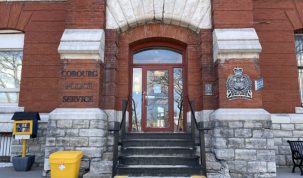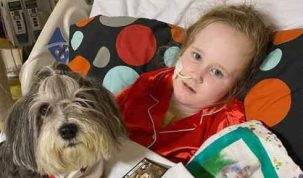By Cecilia Nasmith/Today’s Northumberland
Northumberland County council got the latest news on the pandemic situation at its September meeting, with a presentation called COVID-19 – Response, Recovery and Resilience by Dr. Natalie Bocking, Medical Officer of Health for the Kawartha Pine Ridge District Health Unit.
Dr. Bocking joined the health unit in April, just in time for the peak of the third wave and the broader vaccination roll-out.
“I do want to acknowledge that people are a bit tired of hearing about COVID-19,” she said.
“It has been a long pandemic. We repeatedly think we are rounding the last corner. So we at the health unit have stopped referring to it as ‘the last mile’ and call it ‘the next chapter.’
“It’s not going away. It’s something we will need to live with, and we need to figure out the best way we can balance public-health measures to keep people healthy and also continue to live our lives.
“It certainly has had a toll on everybody.”
Moving into this fall is a different situation from a year ago, Dr. Bocking said. We know more about the virus and how it works, and vaccinations are in the tool kit now. We also have the experience under our belts of getting through another wave.
This is the fourth one, according to the chart she showed councillors. The first happened at the onset of the pandemic in 2020. The second happened in late 2020. The third came along in early spring of 2021. The fourth began this summer.
The good news is that vaccines are making a difference. There is a second outbreak at Lindsay’s Central East Correctional Centre, for example, but it consists of 18 new cases. The previous one over the winter saw more than 140 cases.
It is unknown what the peak of the fourth wave might look like. Dr. Bocking said it depends on two things – the vaccination coverage rate and people limiting (preferably even decreasing) the number of contacts they have since, after all, the virus spreads from person to person.
At this time, the HKPR district has 46 active cases. This includes a Northumberland outbreak associated with a social gathering in Brighton they believe resulted in five cases.
For the success of the vaccination program, Dr. Bocking is thankful to a number of partners – health-unit staff, municipalities, community organizations, hospitals, primary care givers – who administered more than 250,000 doses across the HKPR region.
Latest figures show that, of the population aged 12 and over, 83.1% have one shot and 77.8% have two.
“I really think it’s an unprecedented collective response and uptake of vaccinations which we really should celebrate,” she declared.
That said, she added, getting shots to that last 15-20% will be resource-intensive work whose achievements will be recorded in inches rather than miles.
And Northumberland County will be one area of focus, since its vaccination rate is significantly lower than the regional figures – 70.6% of its eligible population have one shot, and 66% have two.
“We are continually trying to track that and focus our mobile vaccine clinics on areas with lower coverage,” she said.
With mass-immunization clinics now closed, there remain many options for vaccinations. Mobile clinics will continue to be offered, especially in those areas where vaccination coverage is lowest. School-based clinics in local high schools begin this week, held after school hours to minimize disruption. They are open not only to students and staff, but also to the broader community in that location. Pharmacies continue to offer the shots, as do some primary health-care providers. And you can always make an appointment to get one at the health-unit office in Port Hope.
Vaccines aren’t perfect, she said, but they make a significant difference. The unvaccinated have a six-fold higher risk of developing a symptomatic disease, a thirty-fold higher risk of being hospitalized if they acquire COVID-19, and a forty-eight-fold higher risk of being admitted to the ICU.
As for that segment of the population under the age of 12, “the latest information I have is that Pfizer would be putting in an application to Health Canada this fall – potentially October or November – that could see us receiving policy direction as early as December for roll-out of the vaccine for this age group.”
That said, she stressed that the key word here is “potentially.”
Third doses are another question at this point in the pandemic. Right now, Dr. Bocking lists two groups now eligible.
Individuals with severely compromised immune systems, based on the province’s recently expanded list (in consultation with the National Advisory Committee on Immunization), can get what is considered a third dose.
Residents of long-term-care residences, retirement homes and elder-care lodges can get what is considered a booster, as this age group has demonstrated a decrease in immunity levels over time.
As for a booster dose for other groups – from the general population to high-risk groups like health-care workers – NACI is meeting this week. These roll-outs could begin as early as November.
Immunizations have been the most visible work of the health unit’s COVID response. Dr. Bocking listed others, like outbreak management, supporting infection and control measures, epidemiology, and liaising with key partners such as municipalities.
They have provided case and contact management for 2,300 confirmed cases (969 of them in Northumberland County).
They have responded to 71 outbreaks in a variety of settings from schools to hospitals.
They have received and responded to 701 COVID-related complaints, resulting in 18 warnings and two tickets issued.
Then there’s the COVID-19 Call Centre, which did not exist prior to the pandemic. Now it has responded to almost 7,000 calls for information of various kinds.
Just as hospitals have sometimes had to cancel or delay less-urgent procedures, the health unit has had to prioritize the wide range of services it offers. Restaurant inspections, harm-reduction services and hazard-complaint investigations have continued, for example. Other services had to be pulled back.
School-based immunizations were not offered last year, with 1,200 students missing vital shots and 1,200 more missing second doses. Now, with a new school year, this program is looking at a triple cohort of students to serve. As well, more than 5,000 students did not receive their fluoride varnish and initial preventative check-up.
Things are slowly turning around – sexual-health clinics are resuming at 50% capacity, for example. But the impacts of the pandemic and pandemic response will be felt for some time.
Meanwhile, there are such collateral harms as mental health and addiction issues, impact on healthy child growth and development, and the spotlight that has been trained on social inequities and how those most vulnerable are most apt to have unequal access to services.
COVID-19 is not going away. Though vaccines have made a tremendous difference, smaller sporadic outbreaks are likely to continue. But it is hoped COVID-19 will lose its pandemic status and become, instead, an endemic that can be responded to on an on-going basis and a less-urgent scale.
The province will begin to require proof of vaccination for non-essential settings (like sports events) as of Sept. 22. And looking ahead, the health unit advises businesses, workplaces and employers to be prepared with vaccination policies of their own. When employers are aware of workers’ vaccination status, she said, it helps the health unit in those situations where outbreaks and cases must be tracked.
Continue with those basics we all know by now, she urged – the masking, the distancing, the hand hygiene.
“Vaccines are important, but they are not the silver bullet. We cannot forget these other things,” Dr. Bocking said.
“The goal is to prevent further restrictive health measures – we want to keep things open. We don’t want to go into a lockdown again. We want to prevent what Alberta and Saskatchewan are currently experiencing.”
Dr. Bocking offered a final comment.
“If anything, what this pandemic has taught us is that change is ever-present. As soon as we make a plan, something changes.
“I think there’s change fatigue as well as pandemic fatigue.”
Warden Bob Crate thanked her for the presentation.
“The best sort of defence in all things is information,” Crate said.
“Being able to forward this message to our constituents is the best medicine we have, as far as trying to combat misinformation that is floating around the community.”























